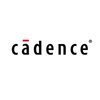
i
Synopsys
Filter interviews by
Synopsys Interview Questions and Answers
78 Interview questions
UVM (Universal Verification Methodology) enhances verification processes through reusability, scalability, and improved collaboration.
Reusability: UVM promotes the creation of reusable verification components, reducing development time. For example, a testbench can be reused across multiple projects.
Scalability: UVM supports large-scale verification environments, making it suitable for complex designs. This is cru...
Cybersecurity is essential for protecting sensitive data and maintaining trust in digital systems across various sectors.
Protects sensitive information: Cybersecurity safeguards personal and financial data from breaches, like the Equifax data breach in 2017.
Ensures business continuity: Effective cybersecurity measures prevent downtime caused by cyberattacks, such as ransomware incidents.
Builds customer trust: Comp...
A memory leak in C++ occurs when allocated memory is not properly deallocated, leading to wasted resources.
Memory leaks happen when 'new' is used without a corresponding 'delete'. Example: 'int* arr = new int[10]; // forgot to delete arr;'
Using smart pointers (like std::unique_ptr) can help manage memory automatically and prevent leaks.
Circular references in smart pointers can also lead to memory leaks. Example: '...
I want to work at Synopsys because of their reputation for innovation and cutting-edge technology in the field of ASIC design verification.
Synopsys is a leader in the EDA industry, known for their advanced tools and solutions for semiconductor design.
I am impressed by Synopsys' commitment to research and development, which aligns with my passion for pushing the boundaries of technology.
I believe working at Synopsy...
The OSI model is a conceptual framework that standardizes the functions of a telecommunication or computing system into seven layers.
The OSI model stands for Open Systems Interconnection model.
It helps in understanding how different networking protocols work together.
The seven layers are: Physical, Data Link, Network, Transport, Session, Presentation, and Application.
Each layer has specific functions and communica...
Convert a number into words
Break the number into groups of three digits
Convert each group into words using a lookup table
Combine the words with appropriate magnitude (thousand, million, billion, etc.)
Task is used for sequential execution while function is used for parallel execution.
Task is used for modeling sequential behavior in Verilog/SystemVerilog
Function is used for modeling combinational logic in Verilog/SystemVerilog
Task can contain delays and blocking statements
Function cannot contain delays or blocking statements
Identify if a number is positive, negative, or zero
Check if the number is greater than 0 to determine if it is positive
Check if the number is less than 0 to determine if it is negative
If the number is neither greater nor less than 0, it is zero
A mod counter is a counter that counts from 0 to a specified modulus value before resetting to 0.
Design a counter with a specified number of bits to represent the count value
Implement logic to increment the count value by 1
Add logic to reset the count value to 0 when it reaches the modulus value
Phonebook app for storing and organizing contacts
Allow users to add, edit, and delete contacts
Include search functionality for easy access to contacts
Implement sorting options by name, phone number, etc.
Provide option to categorize contacts into groups or favorites
Synopsys Interview Experiences
95 interviews found
I appeared for an interview in Jun 2025, where I was asked the following questions.
- Q1. What influenced your decision to choose this option?
- Q2. What are the differences between analog and digital signals?
I applied via Campus Placement and was interviewed in Sep 2024. There were 2 interview rounds.
Basic aptitude-10 question,digital moderate -Question,analog moderate -10 question,verilog and system verilog -10 question
(3 Questions)
- Q1. Latches and flip flop all characteristics equation and proof of the characteristics equation in flip flop.applications of flip flop
- Q2. OOPS,INHERITANCE,VERILOG,BLOCKING - NON BLOCKING ASSIGNMENT OPERATOR and all the basic operations of verilog .
- Q3. Discussion on work experience.
Interview Preparation Tips
Cocubes online aptitude test with some questions on electronics
(1 Question)
- Q1. Given a number write it in words
- Ans.
Convert a number into words
Break the number into groups of three digits
Convert each group into words using a lookup table
Combine the words with appropriate magnitude (thousand, million, billion, etc.)
(1 Question)
- Q1. Views on AI and overall discussion on that
I applied via Referral and was interviewed in Apr 2024. There was 1 interview round.
(5 Questions)
- Q1. Focus on Basics of Digital electronics,verilog SV and UVM will be an advantage.Reasoning questions also plays a crucial role.Realizations of gates using and NAND and NOR gate,Realization of gates using mu...
- Q2. Don't forget look your projects mentioned in your resume,They will directky ask you to write code,Ask lot of questions on projects,Communication skills willbe added advantage.
- Q3. Reasonig questions:-9 ball's weight checking,horses question,a pond of flowers on which day they full if half fill in 10 days,3L 5L required water 4L,4 pin OTP generation probability with unique numbers,go...
- Q4. Don't forget take a look on ypur projects whatever you mentioned in your resume everything matters,Basics of digital electronics,sv and UVM,More focus on practising coding,outputs for snippets plays a cruc...
- Q5. One personal advantage for MNC's refferals matters alot,better to ask anyone in linkdin to reffer you.
(2 Questions)
- Q1. Write code of frequency divider
- Ans.
A frequency divider reduces the frequency of an input signal by a specified factor, often used in digital circuits.
A frequency divider can be implemented using flip-flops.
For example, a divide-by-2 circuit can be made with a D flip-flop.
The output frequency is half of the input frequency.
Frequency dividers are commonly used in clock generation.
They can be cascaded to achieve higher division factors.
- Q2. Difference between latch & flip flop
- Ans.
Latches are level-sensitive devices, while flip-flops are edge-sensitive, used for storing binary data in digital circuits.
Latches are transparent when enabled, allowing data to pass through.
Flip-flops change state only on specific clock edges (rising or falling).
Example of a latch: SR latch, which can hold a state based on Set and Reset inputs.
Example of a flip-flop: D flip-flop, which captures the input value on the ...
Interview Preparation Tips
Skills evaluated in this interview
General aptitude questions
Problem solving, solved 2 out of 3 questions
General topics were given in gd
(2 Questions)
- Q1. Programming concepts
- Q2. Projects and coding round questions solved
I applied via Campus Placement and was interviewed in Aug 2024. There were 3 interview rounds.
Aotitude,core que on all subjects in ece
(2 Questions)
- Q1. INTERNSHIP EXPERIENCE
- Ans.
I completed a 6-month internship at XYZ Company where I gained hands-on experience in physical design tools and methodologies.
Worked on floorplanning, placement, and routing of digital designs
Utilized tools such as Cadence Innovus and Synopsys ICC
Collaborated with cross-functional teams to optimize design performance
- Q2. ON DSD,VLSI,ANALOG ELECTRONICS
(2 Questions)
- Q1. APTITUDE,MATH,VLSI,DSD
- Q2. VLSI (HARD QUESTION BASED ON INDUSTRY LEVEL LIKE ON CIRCUIT HE GIVES ONE SCENARIO U HAVE TO ANSWER IT)
Interview Preparation Tips
Senior Research and Development Engineer 2 Interview Questions & Answers
posted on 17 Aug 2024
(2 Questions)
- Q1. Asked about projects and previous company's work
- Q2. Tree traversal with vertical order
- Ans.
Tree traversal with vertical order involves traversing a binary tree in a top-to-bottom order for each vertical column.
Use a hashmap to store nodes at each vertical level
Perform a level order traversal and update the hashmap with nodes at each vertical level
Sort the keys of the hashmap to get the nodes in vertical order
(2 Questions)
- Q1. Design a phonebook app
- Ans.
Phonebook app for storing and organizing contacts
Allow users to add, edit, and delete contacts
Include search functionality for easy access to contacts
Implement sorting options by name, phone number, etc.
Provide option to categorize contacts into groups or favorites
- Q2. Ant puzzle, Flipping coin puzzle
Skills evaluated in this interview
I appeared for an interview in May 2025, where I was asked the following questions.
- Q1. Java language understanding
- Q2. Deep testing concept
Asic Design Verification Engineer Interview Questions & Answers
posted on 13 May 2025
I appeared for an interview in Apr 2025, where I was asked the following questions.
- Q1. Tell me about yourself
- Q2. Discuss the projects that you have done
- Ans.
I have worked on various ASIC design verification projects, focusing on functional verification and performance optimization.
Led a project for a high-speed data converter, utilizing SystemVerilog and UVM for comprehensive testbench development.
Developed a verification environment for a low-power microcontroller, implementing assertions and coverage metrics to ensure design robustness.
Collaborated with cross-functional ...
- Q3. Fifo design and verilog code
- Ans.
FIFO (First In First Out) is a buffer design used in digital circuits for data storage and transfer.
A FIFO can be implemented using a circular buffer to efficiently manage memory.
Verilog code for a simple FIFO might include a write pointer and a read pointer.
Example: A 4-depth FIFO can be defined with an array of 4 registers.
Control signals like 'full' and 'empty' are crucial for FIFO operation.
Synchronous FIFO uses a ...
- Q4. Puzzels on 1000 bottle and 8 queens chess board.
Top trending discussions






Synopsys Interview FAQs
Some of the top questions asked at the Synopsys interview -
The duration of Synopsys interview process can vary, but typically it takes about less than 2 weeks to complete.
Tell us how to improve this page.
Synopsys Interviews By Designations
- Synopsys R&D Engineer Interview Questions
- Synopsys Applications Engineer Interview Questions
- Synopsys Software Engineer Interview Questions
- Synopsys Security Consultant Interview Questions
- Synopsys VLSI Design and Verification Engineer Interview Questions
- Synopsys Intern Interview Questions
- Synopsys Technical Engineer Interview Questions
- Synopsys Physical Design Engineer Interview Questions
- Show more
Interview Questions for Popular Designations
- R&D Engineer Interview Questions
- Applications Engineer Interview Questions
- Software Engineer Interview Questions
- Sales Executive Interview Questions
- Associate Software Engineer Interview Questions
- Data Analyst Interview Questions
- HR Executive Interview Questions
- Sales Officer Interview Questions
- Show more
Overall Interview Experience Rating
based on 72 interview experiences
Difficulty level
Duration
Interview Questions from Similar Companies
Synopsys Reviews and Ratings
based on 385 reviews
Rating in categories
|
R&D Engineer
160
salaries
| ₹8.1 L/yr - ₹27.6 L/yr |
|
Staff Engineer
159
salaries
| ₹18 L/yr - ₹48 L/yr |
|
Senior R&D Engineer
92
salaries
| ₹15 L/yr - ₹35 L/yr |
|
Software Engineer
75
salaries
| ₹6.5 L/yr - ₹25 L/yr |
|
Security Consultant
73
salaries
| ₹5.8 L/yr - ₹16.9 L/yr |

Intel

Apar Industries

Molex

TDK India Private Limited
- Home >
- Interviews >
- Synopsys Interview Questions













